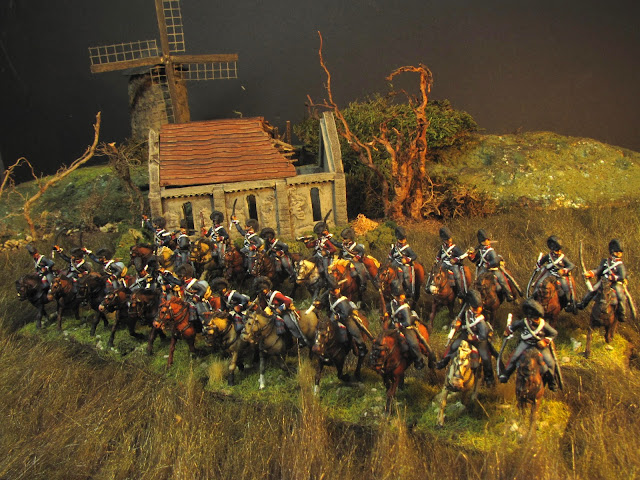I finally finished the last unit I needed, the 23rd Light Dragoons, to complete my cavalry contingent for the Talavera campaign. I now have far more horse than I am likely to need for any future scenario, certainly more heavies which did not see a lot of action in the Peninsular War.
This set is the HaT set, full of all its idiosyncrasies which I documented in an earlier post here. But I still was happy with the way they turned out and can now take a break from cavalry for a while and focus on other things.
A bit of history
The 23rd Light Dragoons appeared and disappeared in history a couple of times prior to the Peninsular War. Originally established by Sir John Burgoyne in 1781, it was re-designated the 19th in 1786. The 23rd was resurrected in 1794 but disbanded again in 1802.
In March of 1803 the 26th (raised 1795) were re-numbered the 19th, and saw service in Egypt, Spain and Waterloo, before finally being disbanded in November 1817.
23rd at Talavera
The 23rd spent relatively little time in the Peninsula, arriving June 1809 and returning to England after the disaster of Talavera in November of the same year. It was to go down in the history books as the British light dragoon regiment that charged headlong into a hidden ditch while advancing on French infantry. They managed to rally on the far side of the ditch and continued their advance but by the end of the day had lost nearly half their number.
Here are a few photos of my painting results:
And all the King's Horse...
The completion of the 23rd gives me all the British cavalry I need for the Talavera campaign. They are as follows:
1st Brigade: commanded by Brigadier General Henry Fane: 3rd (Prince of wales) Dragoon Guards and 4th (Queen's Own) Dragoons
2nd Brigade: commanded by Brigadier General Stapleton Cotton: 14th and 16th Light Dragoons
3rd Brigade: commanded by Brigadier General George Anson: 23rd Light Dragoons and 1st KGL
And really, what is the point in going to all of this trouble if you can't have them all on a table at once!
 |
| Here are the three Light Dragoon regiments, the 14th, 16th and 23rd. |
 |
| And a few photos of all six regiments of horse (although only the 1st KGL Hussars were present at Talavera, my Hussars are composed of a half regiment each of the 1st and 2nd.) |




















